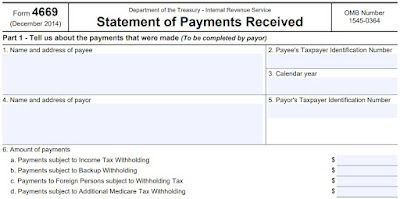I am looking at a case concerning employee status and
payroll taxes.
I see nothing remarkable, except for one question: why
did the IRS bother?
Let’s talk about it.
There was a 501(c)(3) (The REDI Foundation) formed in
1980. Richard Abraham was its officer (a corporate entity must have an officer,
whether one gives himself/herself a formal title or not). Mr A’s wife also
served on the Board.
REDI did not do much from 1980 to 2010. In 2010 Mr A – who was a real estate
developer for over 40 years – developed an online course on real estate
development and began offering it to the public via REDI. Mr A was a one-man
gang, and he regularly worked 60 hours or more per week on matters related to
the online course, instruction, and student mentoring.
COMMENT: Got it. It gave Mr A something to do when he “retired,” if 60 hours per week can be called retirement. I have a client who did something similar, albeit in the field of periodontics.
So REDI went from near inactive to active with its
online course. For its year ended May 2015 it reported revenues over $255 grand
with expenses of almost $92 grand.
COMMENT: Had REDI been a regular corporation, it would have paid income taxes on profit of $163 grand. REDI may have been formed as a corporation, but it was a corporation that had applied for and received (c)(3) status. Absent other moving parts, a (c)(3) does not pay income taxes.
The IRS flagged REDI for an employment tax audit.
Why?
REDI had not issued Mr A a W-2. Instead, it issued a 1099,
meaning that it was treating Mr A as an independent contractor.
Let’s pause here.
A W-2 employee pays FICA taxes on his/her payroll. You
see it with every paycheck when the government lifts 7.65% for social security.
Your employer matches it, meaning the government collects 15.3% of your pay.
A self-employed person also pays FICA, but it is instead
called self-employment tax. Same thing, different name, except that a
self-employed pays 15.3% rather than 7.65%.
My first thought was: Mr A paid self-employment tax on
his 1099. The government wanted FICA. Fine, call it FICA, move the money from the
self-employment bucket to the FICA bucket, and let’s just call … it … a … day.
In short: why did the IRS chase this?
I see nothing in the decision.
Technically the IRS was right. A corporate officer is
a de facto statutory employee of his/her corporation.
§ 3121
Definitions.
For purposes of this chapter, the term "employee" means-
(1) any officer of a corporation; or
Yep, know it well. Been there and have the t-shirt.
Mind you, there are exceptions to 3121(d)(1). For
example, if the officer duties are minimal, the Code does not require a W-2.
Mr A argued that very point.
Problem: there was only one person on the planet that
generated revenues for REDI, and that person was Mr A. Revenues were
significant enough to indicate that any services performed were also substantial.
There was another argument: REDI had reasonable basis
under Section 530 for treating Mr A as a contractor.
COMMENT: Section 530 is an employment relief provision if three requirements are met:
· Consistency
in facts
· Consistency
in reporting
· Reasonable
basis
Section 530 was intended to provide some protection from
employment tax assessments for payors acting in good faith. On first
impression, 530 appears to be a decent argument. Continuing education
instructors are commonly treated as contractors, for example. If REDI treated instructors
with similar responsibilities the same way (easy, as there was only one instructor)
and sent timely 1099s to the IRS, we seem to meet the three requisites.
Except …
Section 530 deals with common law workers.
Corporate officers are not common law workers. They
instead are statutory employees because the statute – that is, Section 3121(d) –
says they are.
Mr A was a statutory employee. REDI was therefore an
employer. There should have been withholding, tax deposits and payroll return filings.
There wasn’t, so now there are penalties and interest and yada yada yada.
I probably would have lost my mind had I represented REDI.
Unless Mr A was claiming outsized expenses against 1099 income, any self-employment
tax he paid would/should have approximated any FICA that REDI would remit as an
employer. Loss to the fisc? Minimal. Let’s agree to switch Mr A to employee
status going forward and both go home.
Why did this not happen? Don’t know. Sometimes the
most interesting part of a case is not in the decision.
Our case this time was The REDI Foundation v
Commissioner, T.C. Memo 2022-34.




